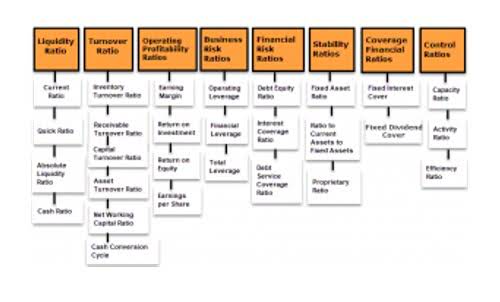Total Manufacturing Total Manufacturing Co

He has developed content across all platforms to implement promotional strategies for businesses. This data is helpful in setting the lowest purchase price that will guarantee a profit after recovering such items as advertising, distributing, and administration expenses. Total manufacturing cost is a useful metric in its own right, as we will see shortly.
Transformative Data
Understanding this concept is essential for making informed decisions throughout the engineering process, from design to production. Accurately assessing these costs helps optimize resource allocation and improve overall product profitability. Manufacturing overhead includes indirect manufacturing costs you incur to keep your production running Retail Accounting smoothly. Explore the intricacies of total manufacturing costs, from calculation methods to their role in pricing strategies and cost optimization.

Components of Total Manufacturing Costs
Lean manufacturing principles aim to eliminate waste, optimize processes, and improve efficiency, thereby reducing overall manufacturing costs and enhancing competitiveness. Our Sonar IoT Platform provides real-time insights to enhance your operations, reduce waste, and boost profitability. Book a call with a Thinaer manufacturing expert today to explore how our solutions can be customized to meet your specific needs and take your manufacturing process to the next level.
Common Challenges in Calculating Manufacturing Costs
To determine the total manufacturing cost, you sum up the direct materials cost (\$680), direct labor cost (\$300), and manufacturing overhead cost (\$150). Combining these figures, the total manufacturing cost for the dining table set is \$1,130. Much like with direct materials, direct labor costs constitute all labor that goes toward converting materials into finished goods. In other words, the direct labor costs that go into the total manufacturing cost online bookkeeping calculation are only made up of staff directly involved in the production part of the business. There can be various ways through which a company can manage and control its total manufacturing cost. Another measure is curtailing human resource expenses while ensuring higher productivity at the same compensation by reducing idle time or unproductive sessions.
- A total of approximately 50GW of battery storage, pumped hydro and hydrogen production capacity was added, while fossil fuel-based power generation capacity increased by 54GW.
- Since the total manufacturing cost is an essential metric for understanding the productivity and profitability of a business, it really pays to get it right the first time.
- A break-even point allows you to foresee the level of production volume, set the price, and even decide whether to buy new machines or tools, as one is able to know ahead of time how much will be spent.
- By delving into the intricacies of total manufacturing cost, you gain a comprehensive view of the resources dedicated to manufacturing your products.
- The policy was re-jigged in 2023 to target reductions in the fossil fuel intensity of the economy, making clean energy a more attractive way for local governments to pursue the targets.
What are the three components of total manufacturing cost?
He was also the former Chairman of the Board of Tri-W Group (formerly W.W. Williams) and advisor to Team Fishel and US Bank. Discover what a bonded warehouse is, how it operates, and its advantages for businesses. Learn how it supports duty deferral, secure storage, and streamlined international trade. Early indications of the targets proposed by China’s key ministries for 2030 and 2035 fall short of maintaining the demand for key clean-energy technologies at the 2023–24 level.

Benefits of Total Productive Maintenance Software
This growth is expected to continue into 2025, driven by major projects aiming to finish before the end of the current five-year plan. While almost all other economies fret total manufacturing cost formula over high inflation, China is struggling with deflation, a product of aggressive expansion of manufacturing and weak domestic demand. By the end of 2024, China had 42 operational long-distance, ultra-high voltage transmission lines, with a total length of over 40,000km and transmission capacity exceeding 300GW.

- Total manufacturing cost is a useful metric in its own right, as we will see shortly.
- Regularly reviewing supplier contracts and negotiating better terms can significantly impact your manufacturing costs.
- But to make TPM truly effective, organizations need the right technology to streamline maintenance, optimize asset performance, and drive measurable results.
- It focuses on production costs, raw materials, direct labor, and manufacturing overhead.
- For instance, in the production of a wooden table, the wood, screws, and varnish used are considered direct materials.
Unlike direct labor and materials, overhead costs are not directly tied to each product but still contribute to the overall cost. Total manufacturing cost represents the sum of all expenses incurred during the manufacturing process, including direct materials, direct labor, and manufacturing overhead. Simply put, total manufacturing cost is the overall sum of money required to manufacture a product. It is calculated by adding all the expenses incurred during production, which include the cost of direct materials, money spent on labour, and other overhead manufacturing expenses. Understanding your total manufacturing costs is a game-changer for any manufacturer.
Selecting an Allocation Base

By adopting meticulous record-keeping practices, conducting detailed analyses, and harnessing the power of technology, you can ensure the accurate allocation of overhead costs. Regularly reassess your allocation methods to ensure they remain accurate and fair. As your business evolves, production processes may change, and new cost drivers may emerge. You can adapt to evolving needs and maximize profitability by continuously reviewing and refining your allocation techniques. To illustrate, let’s consider an example where your manufacturing business utilizes steel as a direct material.
This allocation method ensures that indirect costs are proportionally assigned to each product. Understanding these components in detail helps you see exactly where your money is going. It gives you a clearer picture of your expenses, and from there, you can make better decisions to cut costs, improve processes, and ultimately boost profitability.

Comments
Comments are closed.